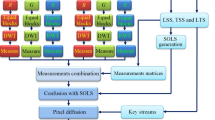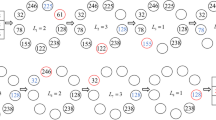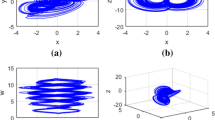Abstract
Most of existing optical color image encryption schemes have born security risks due to the adoption of linear transform, and data redundancy for the generation of complex image. To settle these problems effectively, a hybrid scheme for self-adaptive double color-image encryption is proposed in this paper. In this scheme, each RGB color component of two secret color images is first compressed and encrypted by 2-D compressive sensing (CS) in which measurement matrices are generated by 1-D compound chaotic systems and further are optimized by steepest descent algorithm to improve image reconstruction effect. Then, the two measured images are regarded as the real part and imaginary part to constitute a complex image, respectively. In the end, the complex image is reencrypted by self-adaptive random phase encoding and discrete fractional random transform (DFrRT) to obtain the final encrypted data. In the process of DFrRT and random phase encoding, the correlations between R, G, B components are adequately utilized. The production of key streams not only depends on the initial values of chaotic systems but also on plaintexts, and the three color components affect each other to enhance the ability against the known plaintext attack. The projection neural network algorithm is adopted to obtain the decryption images. Simulation results also verify the validity and security of the proposed method.






Similar content being viewed by others
References
Baraniuk RG (2007) Compressive sensing. IEEE Signal Proc Mag 24(4)
Candes EJ, Romberg JK, Tao T (2006) Stable signal recovery from incomplete and inaccurate measurements. Commun Pur Appl Math 59(8):1207–1223
Chen F, Wong K-W, Liao X-F, Xiang T (2014) Period distribution of generalized discrete Arnold cat map. Theor Comput Sci 552:13–25
Chen L, Zhao D (2006) Optical color image encryption by wavelength multiplexing and lensless Fresnel transform holograms. Opt Express 14(19):8552–8560
Chen W, Quan C, Tay CJ (2009) Optical color image encryption based on Arnold transform and interference method. Optical Communications, pp 3680–3685
Deepan B, Quan C, Wang Y (2014) Multiple-image encryption by space multiplexing based on compressive sensing and the double-random phase-encoding technique. Appl Opt 53(20):4539–4547
Huang R, Rhee KH, Uchida S (2014) A parallel image encryption method based on compressive sensing. Multimed Tools Appl 72(1):71–93
Huang X, Ye G (2014) An image encryption algorithm based on hyper-chaos and DNA sequence. Multimed Tools Appl 72(1):57–70
Joshi M, Singh K (2007) Color image encryption and decryption using fractional Fourier transform. Opt Commun 279(1):35–42
Liang Y, Liu G, Zhou N-R, Wu J (2015) Color image encryption combining a reality-preserving fractional DCT with chaotic mapping in HSI space. Multimedia Tools Application, pp 1–16
Li C-J, Li C-D, Huang T-W (2011) Exponential stability of impulsive high-order Hopfield-type neural networks with delays and reaction-diffusion. Int J Comput Math 88(15):3150–3162
Li C-J, Yu X-H, Huang T-W, Guo C, He X (2016) A generalized Hopfield network for nonsmooth constrained convex optimization: Lie derivative approach. IEEE T Neur Net Lear 27(2):308–321
Li C-J, Yu X-H, Yu W-W, Huang T-W, Liu Z-W (2016) Distributed event-triggered scheme for economic dispatch in smart grids. IEEE T Ind Informat 12 (5):1775–1785
Li C-J, Zhou X-J, Gao DY (2014) Stable trajectory of logistic map. Nonlinear Dynam 78(1):209–217
Li H, Wang Y (2011) Double-image encryption based on discrete fractional random transform and chaotic maps. Opt Laser Eng 49(7):753–757
Lin Q, Wong K -W, Chen J (2013) An enhanced variable-length arithmetic coding and encryption scheme using chaotic maps. J Syst Softw 86(5):1384–1389
Liu H, Xiao D, Zhang YS (2015) Securely compressive sensing using double random phase encoding. Optik 126(20):2663–2670
Liu Q, Wang J (2016) L 1-Minimization algorithms for sparse signal reconstruction based on a projection neural network. IEEE T Neur Learn 27(3):698–707
Liu X, Mei W, Du H (2014) Optical image encryption based on compressive sensing and chaos in the fractional Fourier domain. J Mod Opt 61(19):1570–1577
Liu Z, Li Z, Liu W, Wang Y, Liu S (2013) Image encryption algorithm by using fractional Fourier transform and pixel scrambling operation based on double random phase encoding. Opt Laser Eng 51(1):8–14
Liu Z, Liu S (2007) Double image encryption based on iterative fractional Fourier transform. Opt Commun 275(2):324–329
Lui OY, Wong K-W, Chen J, Zhou J (2012) Chaos-based joint compression and encryption algorithm for generating variable length ciphertext. Appl Soft Comput 12(1):125–132
Nishchal NK, Joseph J, Singh K (2004) Securing information using fractional Fourier transform in digital holography. Opt Commun 235(4):253–259
Norouzi B, Seyedzadeh SM, Mirzakuchaki S, Mosavi MR (2015) A novel image encryption based on row-column, masking and main diffusion processes with hyper chaos. Multimed Tools Appl 74(3):781–811
Rawat N, Kumar R, Lee BG (2014) Implementing compressive fractional Fourier transformation with iterative kernel steering regression in double random phase encoding. Optik-Int J Light Electron Opt 125(18):5414–5417
Sato D (2015) Security evaluation for leakage of a fingerprint image from USB-based fingerprint authentication systems. Proc IEICE 115(117):39–44
Sui L, Lu H, Wang Z, Sun Q (2014) Double-image encryption using discrete fractional random transform and logistic maps. Opt Laser Eng 56:1–12
Tao R, Lang J, Wang Y (2008) Optical image encryption based on the multiple-parameter fractional Fourier transform. Opt Lett 33(6):581–583
Wen J, Li D, Zhu F (2015) Stable recovery of sparse signals via L p -minimization. Appl Comput Harmon A 38(1):161–176
Wen J, Zhou Z, Wang J, Tang X-H, Qun M (2016) A sharp condition for exact support recovery of sparse signals with orthogonal matching pursuit. IEEE T Appl Supercon
Wen J, Zhu X, Li D (2013) Improved bounds on restricted isometry constant for orthogonal matching pursuit. Electron Lett 49(23):1487–1489
Zhang L, Liao X-F, Wang X (2005) An image encryption approach based on chaotic maps. Chaos Solition Fract 24(3):759–765
Zhang S, Gao T (2015) An image encryption scheme based on DNA coding and permutation of hyper-image. Multimed Tools Appl 2015:1–14
Zhang Y -S, Xiao D (2013) Double optical image encryption using discrete Chirikov standard map and chaos-based fractional random transform. Opt Laser Eng 51(4):472–480
Zhang Y-S, Zhang L-Y, Zhou J, Liu L, Chen F, He X (2016) A review of compressive sensing in information security field. IEEE Access 4:2507–2519
Zhang Y-S, Zhou J, Chen F, Zhang L-Y, Wong K-W, He X (2016) Embedding cryptographic features in compressive sensing. Neurocomputing 205:472–480
Zhang Y, Zhang L-Y (2015) Exploiting random convolution and random subsampling for image encryption and compression. Electron Lett 51(20):1572–1574
Zhou Y-C, Bao L, Chen C-L (2014) A new 1D chaotic system for image encryption. Signal Process 97:172–182
Acknowledgments
This work was supported in part by the National Key Research and Development Program of China under Grant 2016 YFB0800601, in part by the National Nature Science Foundation of China under Grant 61472331, in part by the Talents of Science and Technology promote plan, Chongqing Science & Technology Commission.
Author information
Authors and Affiliations
Corresponding author
Rights and permissions
About this article
Cite this article
Han, F., Liao, X., Yang, B. et al. A hybrid scheme for self-adaptive double color-image encryption. Multimed Tools Appl 77, 14285–14304 (2018). https://doi.org/10.1007/s11042-017-5029-7
Received:
Revised:
Accepted:
Published:
Issue Date:
DOI: https://doi.org/10.1007/s11042-017-5029-7




